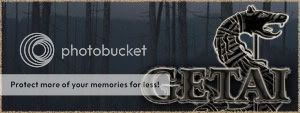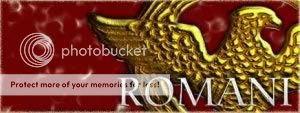
Originally Posted by
Geticus

Well I am interested in your concepts though I think point three is overly radical in that Republican legionaries wore a greave on the left leg and the greave defends the front, not the side, so why invest all that money in greaves if you fight facing right? Since shield bashes were used and since Romans sometimes countered a overhand slash by raising the shield to block and thrusting beneath it to the vitals, I think your thesis would have to account for those motions, i.e. you run the risk of overgeneralizing if you state that shields were as a rule grounded.
As far as how tight the sheild walls were, I lack primary source material on it at hand. I think Vegetius is one place to look since he spoke about the "murata ferrea" or iron wall formed by the legions. I read it long ago so I don't recall any precise points but it is a very key source for this kind of thing.
I strongly agree with your point #4.
I recommend Caesar's Bellum Gallicum, Bellum Civile, and pseudo-caesar's Bellum Africanum which has very good descriptions of Caesar's army doing a long defensive retreating march while surrounded by Numidian skirmisher cavalry and pelted on all sides by javelins, Roman shields had everything to do with their survival during that march.
Vegetius and Velleius Paterculus as well as Sallust on the Jugurthine war and of course Livy are all very relevant to Republican era warfare.




 Reply With Quote
Reply With Quote



 +
+ =
=

 for
for 



 I may be drunk Miss, but you're ugly. In the morning I'll be sober, and you'll still be ugly. -Winston Churchill
I may be drunk Miss, but you're ugly. In the morning I'll be sober, and you'll still be ugly. -Winston Churchill



Bookmarks